A MOVEABLE FEAST
From Aebleskiver to Zydeco Stew, Part 1 – an ABC of weird and wonderful American food
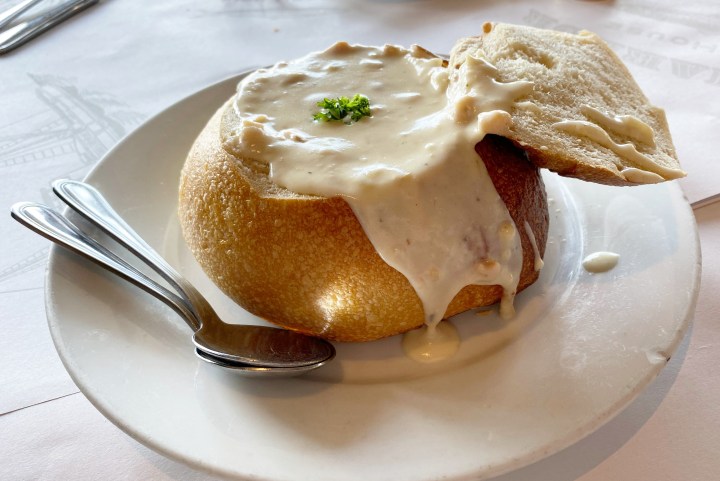
The way to the heart of a country is also through the stomach, which is why the map of our American road trip is morphing into a curious culinary ABC.
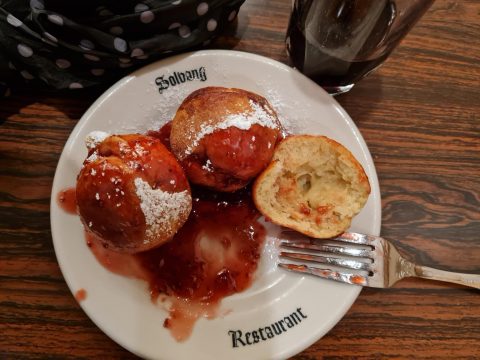
Solvang’s aebleskivers. (Photo: Marita van der Vyver)
A is for aebleskiver, the culinary pride of Solvang, a town known as The Danish Capital of America, after a group of Danish immigrants settled here in 1911 and recreated a piece of Denmark in a rather unlikely setting. It also happens to be in the heart of the Californian winelands and became famous beyond American borders because the movie Sideways was filmed in the vicinity.
I loved Sideways, about an unsuccessful writer (Paul Giamatti) who takes his actor friend on a wine-tasting trip, despite the Giamatti character’s disdain for merlot – which I still insist on liking. I will always remember their female friend trying to explain all the reasons she appreciates wine, referring to the climate, the soil, the seasons, and finally giving up and simply saying: “And it tastes so fucking good.”

In the booth where Sideways was filmed. (Photo: Marita van der Vyver)
But I watched the movie almost two decades ago and completely forgot about the Solvang connection, so as we walked through what seemed like a kind of Danish Disneyland with fake storks on chimneys and fake owls above doors, I kid you not, we weren’t thinking of wine. We wanted to taste the famous aebleskiver, a pancake in the shape of a tennis ball with a name that means “apple slices” – although there are no apple slices or even a taste of apple in the Solvang version. This strange description was already enough to whet our curiosity, if not our appetite.
And then one of those magnificent coincidences that have been marking this road trip occurred once more. An extroverted motherly waitress, the kind I’d only seen in American movies before, led us to a booth in the Solvang Restaurant, and as we settled in our seats, we noticed a plaque on the wall announcing that a scene from Sideways was filmed in this exact booth in October 2003.
Of all the joints in town, we had to walk into this one, and we had to get this booth. So of course I had to order a glass of wine with my aebleskiver – which was sprinkled with powdered sugar, splashed with raspberry jam, and surprisingly fluffy on the inside – and of course it had to be merlot. Just for the hell of it.

Beignets in New Orleans. (Photo: Marita van der Vyver)
B is for beignets, bagels, and biscuits with gravy (for breakfast). We are still coming to terms with the American concept of biscuits, closer to what we would call scones, and trying to get used to the idea of gravy for breakfast. But we’ll get there. Meanwhile we’re loving bagels with cream cheese for breakfast.
And we had to taste Café du Monde’s renowned beignets while we were in New Orleans – although certainly not for breakfast. After a month in America we’ve probably consumed more sugar than in a year in France, so we aim to limit our sugar intake at breakfast. We’ve given up on the rest of the day.
Those New Orleans’ beignets were absolutely delightful, bombarded rather than delicately sprinkled with powdered sugar, and we couldn’t help leaving a distinct white trail behind us as we wandered along the Mississippi eating our beignets from a paper bag.
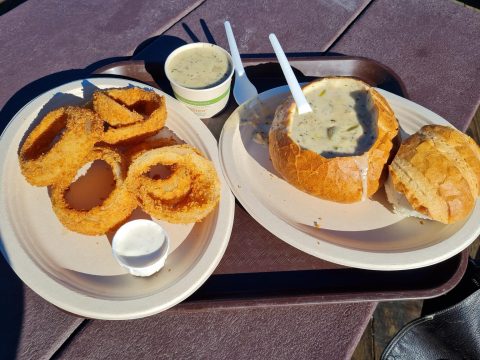
Clam chowder with king-size onion rings on Stearns Wharf, California. (Photo: Marita van der Vyver)
C is for clam chowder, crackers, crawfish and catfish and other Cajun and Creole specialities. Actually the Cajun-Creole cuisine of Louisiana and New Orleans deserves a separate heading. According to a South African friend living in the USA, Louisiana is the only state where you can eat really well every day, on a fairly limited budget. A slightly exaggerated claim, I’m sure, and not what I’d call healthy eating with all that fried stuff, but most of the dishes are indeed as tasty as could be expected of any cuisine with a French influence. (I might not be an objective judge after 25 years in France.)
So, for the moment, let’s stick to clam chowder, of which we’ve tasted our fair share from New England to New Jersey on the East Coast and all along the West Coast of California, usually served with crackers, and sometimes in a big hollowed-out sourdough bread. We enjoyed each clam chowder we tasted, even a tepid version from a tin slurped up one freezing night in our camper van, proving yet again that anything tastes good if you’re hungry enough and cold enough.
But our most memorable clam chowder was on Santa Barbara’s Stearns Wharf, because we were there with an American friend and the sky was bright blue and the Pacific Ocean glittered all around us. Proving yet again, I suppose, that good company and a beautiful setting can improve any meal.
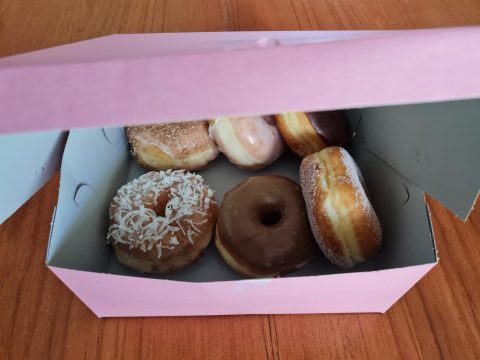
Donut delight in Santa Barbara. (Photo: Marita van der Vyver)
D is for donuts, what else. Our quest for the Holy Grail of Donuts reached its goal in an unassuming little shop in a quiet suburban street of Santa Barbara – although those we tasted from bakeries in Cos Cob, Connecticut and Santa Ynez, California came a close second. But the Santa Barbara donuts were simply next level, not too sweet with an almost cloud-like texture and just the slightest suggestion of crispiness as you bite into them.
Yes, I’m afraid I was contaminated by my partner’s donut obsession. Although I still can’t eat more than one at a time while he easily scoffs down three in a row.

Enchiladas. (Photo: JessicaVargasJ on Pixabay)
E is for enchiladas. Mexican and Tex-Mex eateries have become a part of the American landscape, but for the true taste you have to experience a home-cooked meal. We were fortunate to have a friend of a friend cook for us in California, from her grandmother-in-law’s handwritten recipes, with her husband mixing excellent Margaritas on the side. Our friend Robin made the spicy soup and the guacamole and other starters, and the entire meal was marvellous, but Laura’s enchiladas baked in a thick cheesy sauce were beyond marvellous. I’d been to Mexico, where I’d only eaten in restaurants and never tasted anything as good as these enchiladas.
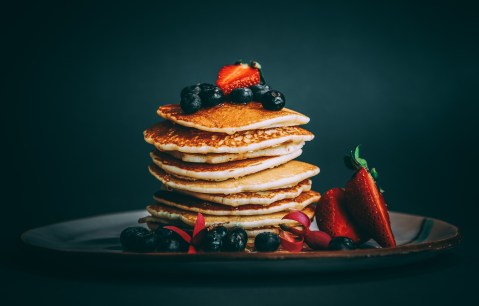
Flapjacks. (Photo: Sam Moqadam on Unsplash)
F is for flapjacks, also known as pancakes, but sturdier than French crèpes or Afrikaans pannekoek, and served with maple syrup for a hearty breakfast. I’ve been reading John Steinbeck’s Travels with Charley: In Search of America, about a road trip he undertook with a French poodle called Charley in 1960, and one of the many paragraphs that made me smile in recognition was his claim that breakfast was the only meal you could order with a measure of confidence in just about any roadside diner in the USA. This is still mainly true during my own American road trip 60 years after Steinbeck’s.
The first flapjacks breakfast we ordered during our road trip was in Memphis, Tennessee, in a restaurant-cum-shop called Cracker Barrel, part of a chain of “old-fashioned” eateries, certainly not a venue for fancy dining – and it was delicious. Even the bottomless coffee was better than in most other roadside places. And the orange juice was freshly squeezed. We’ve been too afraid to spoil this experience by eating any other meal in a Cracker Barrel (which I keep calling Cracker Jack), but I can surely vouch for breakfast.
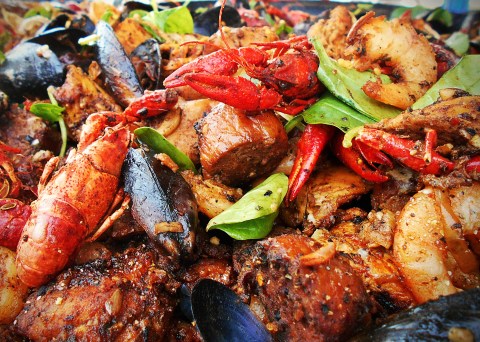
Gumbo. (Photo: laineypics on Pixabay)
G is for grits and gumbo, grits being another breakfast food, a porridge made from maize flour like our South African mieliepap, but like pap and the Italian relative called polenta this porridge is also served for lunch or dinner. In South Carolina it is called hominy and often eaten with shrimps or other seafood.
Gumbo is a thick stew which you absolutely have to taste if you drive through Louisiana, since it’s known as the official state dish. It is sometimes confused with jambalaya, which also has Cajun-Creole origins, although in a gumbo the white rice is supposed to be cooked separately from the rest of the stew, while the rice goes into the jambalaya pot from the start. The gumbo we enjoyed in New Orleans’ French Quarter was so finger-licking good that we forgot to take a picture once we had the first taste. Which is probably the ultimate compliment.

Burger. (Photo: Shutterbug75 on Pixabay)
H is for hamburgers, of course. How could we tour along Route 66 without enjoying this iconic American meal? We were patient, though, saving the best for last, and waited until we reached the official end of Route 66 on the Santa Monica Wharf in Los Angeles before we ordered two outrageously huge and juicy hamburgers to celebrate. Mine was a classic cheese-and-meat extravaganza, Alain’s a more daring open chilli burger, because he believes that everything tastes better with chilli.
Before the end of this trip he’ll probably be adding chilli to his beloved donuts too.
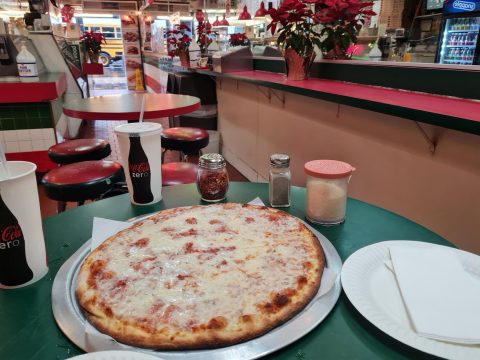
Pizza in Los Angeles. (Photo: Marita van der Vyver)
I is for Italian eateries and all their delights, especially pizzas which have become as American as hamburgers. In fact, my first encounter with this strange thing called pizza (or “peeza” as I thought it was pronounced) was as a child devouring American comic books in the early Seventies, in a South African suburb where nobody could tell me what “peeza” tasted like. It took quite a few years and many comic books before I realised that the pizza which Archie and Jughead and Veronica and Betty were always eating was actually of Italian origin. Somewhere in my subconscious I probably still think that pizza, like pumpkin pie and Bruce Springsteen, was born in the USA.
Although I’ve become a bit of a pizza snob ever since I tasted the real thing in Naples, I must admit I was bowled over by the plain cheese and tomato pizza we were forced to order one rainy afternoon in Los Angeles. We had less than 15 minutes to feed our famished bodies before the departure of a bus we needed to catch, and ended up carrying the flat pizza box to the bus and sneaking bites behind our mouth masks as we searched for the famous Hollywood sign on the hill.
The pizza was so good – thin crust, juicy on top, just the right amount of melting cheese – that we almost missed our first glimpse of the Hollywood sign.
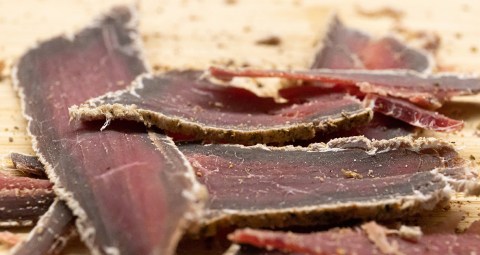
Jerky. Looks like biltong, but it ain’t. (Photo: Evilowl on Pixabay)
J is for jerky, which I tasted in New Mexico only because everyone kept asking me what I thought of jerky, and my answer has been consistent: Not a patch on our South African biltong.
Jerky might be dried and salted strips of meat, but it remains a rather poor cousin of biltong. And if you think my opinion is skewered by patriotism, I can assure you that my French partner, who loves biltong, is even less impressed with jerky than I am.
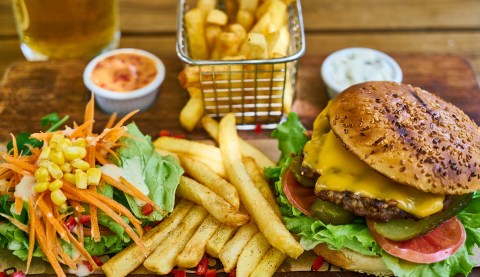
No shortage of food. (Photo: Engin_Akyurt on Pixabay)
K is for king size, which every single portion of food I’ve tasted in this country has been.
Maybe my stomach has shrunk after too many years in France, but I simply can’t get used to the amount of food on my plate here in the USA.
Time and again I have to ask for a doggy bag, and often I wish we had Steinbeck’s French poodle with us in our camper van to help us eat all the food we can’t finish on our own.
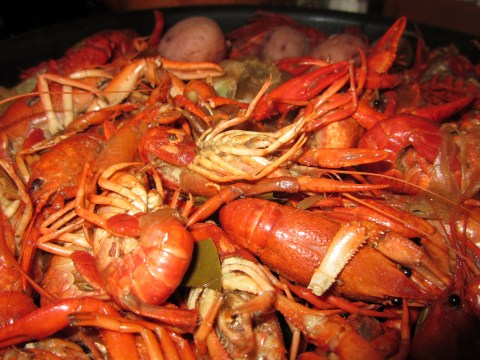
Crawfish. (Photo: mmuller on Pixabay)
L is for Louisiana cuisine, a melange of Cajun and Creole, without clear distinctions between the two. Apparently “Cajun” is derived from the word “Acadian”, denoting the French immigrants expelled from Nova Scotia who landed in Louisiana after decades of hardship, eventually marrying people from many other cultures, whereas “Creole” is a derivative of the Spanish “criollo”, meaning native or local and originally used for people born in Louisiana, descendants of French or Spanish parents. But of course these Creoles also married into other cultures, and for at least a century both Cajuns and Creoles have been born in Louisiana, so the words are often used interchangeably.
When it comes to food, I’m told that Cajun cuisine is more rural and robust, with meaty one-pot dishes like jambalaya or boiled crawfish, while Creole cuisine was created in the city of New Orleans, with stronger cosmopolitan and especially French influences. For those of us not born in Louisiana it seems a case of you like tomayto and I like tomahto. Whether you want to call it Cajun or Creole, the proof of the pudding is in the eating – and eating a few Cajun-Creole dishes remains one of the most enjoyable experiences of an American road trip.
And now we are almost halfway through the alphabet and I’ve written myself into a state of hunger – maybe even hungry enough for another king-size American meal – so I’ll continue this culinary ABC next month, with M for maple syrup and marshmallows roasted over an open fire… DM/TGIFood
Read Part 2 in the February edition of Marita van der Vyver’s A Moveable Feast in Daily Maverick’s TGIFood.
The author supports Ladles of Love, an NGO feeding the hungry and providing healthy food in Cape Town. You can support them here Ladles of Love.





 Become an Insider
Become an Insider
Comments - Please login in order to comment.